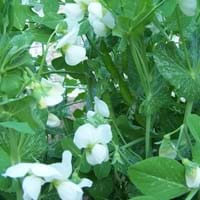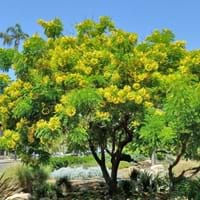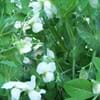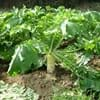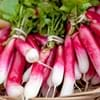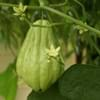Life Span
Annual
Perennial
Type
Vegetable
Flowering Plants, Tree
Origin
Mediterranean
Brazil
Types
cowpea , pigeon pea
Not Available
Number of Varieties
Not Available
Habitat
Fields, Loamy soils
Not Available
USDA Hardiness Zone
Not Available
Not Available
AHS Heat Zone
12-1
Not Available
Sunset Zone
A1, A2, A3, H1, H2, 1a, 1b, 2a, 2b, 3a, 3b, 4, 5, 6, 7, 8, 9, 10, 11, 12, 13, 14, 15, 16, 17, 18, 19, 20, 21, 22, 23, 24
Not Available
Habit
Vining/Climbing
Upright/Erect
Minimum Width
Not Available
Flower Color
White, Pink, Lavender
Yellow
Flower Color Modifier
Bicolor
Bicolor
Fruit Color
Green
Not Available, White
Leaf Color in Spring
Green, Sea Green, Gray Green
Dark Green
Leaf Color in Summer
Not Available
Dark Green
Leaf Color in Fall
Green, Blue Green, Gray Green
Dark Green
Leaf Color in Winter
Green, Blue Green, Gray Green
Dark Green
Leaf Shape
Egg-shaped
Pinnate
Plant Season
Spring, Fall, Winter
Spring, Summer, Fall
Sunlight
Full Sun, Partial Sun
Partial shade, Full Shade
Type of Soil
Clay, Loam, Sand
Loam
The pH of Soil
Neutral
Acidic, Neutral, Alkaline
Soil Drainage
Well drained
Well drained
Bloom Time
Early Spring, Spring, Late Spring, Fall, Late Fall, Early Winter, Winter, Late Winter
Indeterminate, Summer
Tolerances
Variety of soil types
Drought
Where to Plant?
Ground
Ground
How to Plant?
Seedlings
Seedlings, Stem Planting
Plant Maintenance
Medium
Medium
Watering Requirements
Do not let dry out between waterings, Needs watering once a week
Requires regular watering
In Summer
Consistently
Lots of watering
In Spring
Adequately
Moderate
In Winter
Less Watering
Average Water
Soil pH
Slightly Acidic
Acidic, Neutral, Alkaline
Soil Type
Clay, Loam, Sand
Loam
Soil Drainage Capacity
Well drained
Well drained
Sun Exposure
Full Sun, Partial Sun
Partial shade, Full Shade
Pruning
No pruning needed, Remove damaged leaves, Remove dead branches, Remove dead leaves
Requires very little pruning
Fertilizers
All-Purpose Liquid Fertilizer, Compost
All-Purpose Liquid Fertilizer
Pests and Diseases
Aphids, Leaf curl, Powdery mildew, Red blotch, Root rot
Red blotch, Thripes
Plant Tolerance
Light Frost
Drought
Flower Petal Number
Single
Single
Foliage Texture
Medium
Bold
Foliage Sheen
Matte
Matte
Attracts
Not Available
Not Available
Allergy
Diarrhea, Intestinal gas
Not Available
Aesthetic Uses
Not Used For Aesthetic Purpose
Showy Purposes
Beauty Benefits
For treating wrinkles
Not Available
Environmental Uses
Food for animals
Air purification
Medicinal Uses
No Medicinal Use
No Medicinal Use
Part of Plant Used
Leaves, Seeds
Whole plant
Other Uses
Cosmetics, Making Shampoo, Used as a nutritious food item, Used As Food
Used as Ornamental plant
Used As Indoor Plant
No
No
Used As Outdoor Plant
Yes
Yes
Garden Design
Container, Edible, Herb, Vegetable, Vine
Shady Tree, Showy Tree
Botanical Name
PISUM sativum
Cassia leptophylla
Common Name
Garden Pea
gold medallion tree
In Hindi
मटर
gold medallion tree
In German
Erbse
gold medallion tree
In French
Erbse
gold medallion tree
In Spanish
guisante
árbol medallón de oro
In Greek
μπιζέλι
χρυσό δέντρο μετάλλιο
In Portuguese
ervilha
árvore medalhão de ouro
In Polish
groch
Drzewo Medalion złota
In Latin
pea
aureus arbore
Phylum
Magnoliophyta
Magnoliophyta
Class
Magnoliopsida
Magnoliopsida
Clade
Dicotyledonous
Angiosperms, Eudicots, Rosids
Tribe
Not Available
Not Available
Subfamily
Not Available
Not Available
Number of Species
Not Available
Difference Between Garden Pea and Cassia Leptophylla
If you are confused whether Garden Pea or Cassia Leptophylla are same, here are some features about those plants to help you choose better. Many people think that these two plants have the same characteristics, but one can see Garden Pea and Cassia Leptophylla Information and learn more about it. Fertilizers required for proper growth of Garden Pea are All-Purpose Liquid Fertilizer and Compost, whereas for Cassia Leptophylla fertilizers required are All-Purpose Liquid Fertilizer. Hence, one should know the basic difference between Garden Pea and Cassia Leptophylla if you are planning to have them in your garden to enhance its beauty.
<
Flowering PlantsImportance of Garden Pea and Cassia Leptophylla
Want to have the most appropriate plant for your garden? You might want to know the importance of Garden Pea and Cassia Leptophylla. Basically, these two plants vary in many aspects. Compare Garden Pea and Cassia Leptophylla as they differ in many characteristics such as their life, care, benefits, facts, etc. Every gardener must at least have the slightest clue about the plants he wants to plant in his garden. Compare their benefits, which differ in many ways like facts and uses. The medicinal use of Garden Pea is No Medicinal Use whereas of Cassia Leptophylla is No Medicinal Use. Garden Pea has beauty benefits as follows: For treating wrinkles while Cassia Leptophylla has beauty benefits as follows: For treating wrinkles.
Compare Facts of Garden Pea vs Cassia Leptophylla
How to choose the best garden plant for your garden depending upon its facts? Here garden plant comparison will help you to solve this query. Compare the facts of Garden Pea vs Cassia Leptophylla and know which one to choose. As garden plants have benefits and other uses, allergy is also a major drawback of plants for some people. Allergic reactions of Garden Pea are Diarrhea and Intestinal gas whereas of Cassia Leptophylla have Not Available respectively. Having a fruit bearing plant in your garden can be a plus point of your garden. Garden Pea has showy fruits and Cassia Leptophylla has no showy fruits. Also Garden Pea is not flowering and Cassia Leptophylla is flowering. You can compare Garden Pea and Cassia Leptophylla facts and facts of other plants too.
